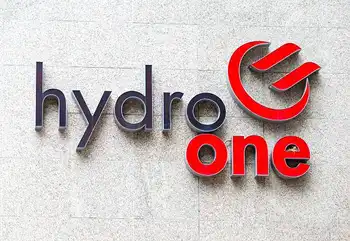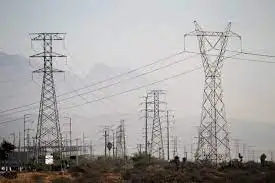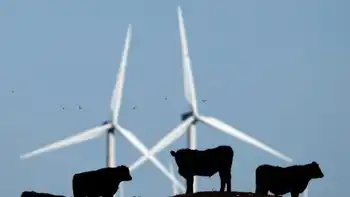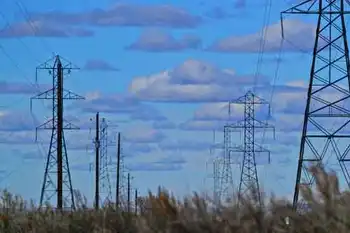Who Has Seen The Wind Power?
TORONTO -- - Jim Salmon is a modern-day prospector, looking for the gold of the future -- clean, green energy.
He scouts the country in search of its windiest places, quietly touring Canada on behalf of commercial interests he declines to fully identify. The chatter in the electricity industry is that big utilities -- even petroleum companies -- are trying to get a hammerlock on rights for the most favourable locations for wind turbines.
Mr. Salmon, who runs a company evocatively called Zephyr North, does "wind-resource assessment," he said. Using old meteorological charts and modern wind-speed testing equipment, he is able to estimate a site's potential for wind-power-minded clients: Newfoundland "would probably be one of the best," he said, along with Cape Breton, PEI, the Great Lakes coastline, southwestern Alberta and parts of southern Manitoba and Saskatchewan.
To date, Canada has been only a minor player in the global wind-energy business, which was pioneered in countries like Denmark and Germany. But TransAlta Corp., the big Alberta electrical utility, said recently it will invest up to $2-billion over the next decade on wind turbines. The decision, coming from a utility known mostly for its fossil-fuel-fired generators (it's the country's second-biggest emitter of greenhouse gases), could be the clearest sign yet that wind energy is about to change the Canadian landscape.
In Toronto, a wind turbine was placed last month at the city's Exhibition Place, the first time one of the machines has been erected in an urban area. Turbines are also running in Southern Alberta, Quebec and a few other locations. Phillip Andres foresees the day when thousands of them will sprout like flowers along the shores of the Great Lakes, on gusty spots on Canada's ample reserves of crown lands, and on the farms and ranches of the windswept Prairies.
"There are tens of thousands of megawatts that could be installed," said Mr. Andres, sales manager at Vestas Canadian Wind Technology Inc.
Energy experts say they've never seen anything like the rapid growth in this electricity source. In 2001, wind-energy capacity around the world grew by more than 30 per cent. Since 1995, capacity has risen nearly five-fold.
"The world is fast turning to wind for its electricity," said Lester Brown of Washington, D.C.'s Earth Policy Institute, an environmental think tank. By his calculations, enough electricity is now being extracted from the world's winds to meet the residential needs of 23 million people, or the combined populations of Denmark, Finland, Norway and Sweden. Meanwhile, electricity from coal, the dirtiest fossil fuel, has fallen by nine per cent since 1995.
Wind energy, a power source that 20 years ago basically didn't exist, has become the first green, renewable energy technology to achieve a commercial breakthrough, leaving solar far behind. Modern wind turbines have become so efficient at making electricity that in many windy places they are competitive with coal and nuclear power.
Proponents say wind power is the perfect medicine for what is ailing a sick planet: It doesn't release carbon dioxide or other greenhouse gases, reduces smog and acid-rain pollutants, and doesn't harm wildlife (birds can generally see well enough to avoid their turning blades, and the towers rarely fall down). At worst, a few people object to the look of wind turbines, or their slight humming noise.
The winds blow over every country in the world, and no wind cartel can try to drive up its price. The Canadian Wind Energy Association estimates global wind energy potential, even excluding environmentally sensitive areas from development, is about five times current global electricity use.
It's the perfect answer for those sceptical about how Canada will achieve its Kyoto Protocol objectives. "It is the single largest source of green renewable energy available to us. There is no other resource that can come close," said Andrew Pape-Salmon, director of sustainable energy for the Pembina Institute, an environmental think tank based in Alberta and Ottawa.
The most aggressive developers have been the Germans, followed by the Americans and then the Spaniards. Denmark is fourth -- the tiny European country now gets nearly a fifth of its electricity from the wind, and is the home to several of the world's biggest turbine companies.
The European penchant for the wind almost harks back to medieval times. Dutch-style windmills were used by the 12th century, and became a major source of power in Europe in the era before petroleum.
But Canada, with its quick cool winds, has the potential to be the Saudi Arabia of wind energy.(Cold air is denser than warm air, carrying more of an energy punch.) The biggest project here so far is a 100-megawatt wind farm in the Gaspé region of Quebec, run by Axor Group Inc. The second-biggest concentration of wind farms is in the Pincher Creek area of Southern Alberta, where two companies have set up to take advantage of this windy location.
Now those in the industry say there's about to be a wind-power gold rush, partly due to new federal incentives. Ottawa has earmarked $250-million to encourage turbine development, giving owners up to 1.2 cents per kilowatt hour (the amount of juice needed to run a 100-watt lightbulb for 10 hours) they produce.
A side benefit of plunking turbines on Canada's agricultural fields is that they would allow farmers to charge rent for them, harvesting a second cash crop from their land.
The call of the wind isn't only being heard by environmentalists. It's a business proposition with a future. Fred Gallagher, a former petroleum geologist whose father ran Dome Petroleum, is chief executive officer at Vision Quest Wind Electric, recently purchased by TransAlta to spearhead its wind-energy program. "Oil and gas not only was a sunset industry, but was viewing itself as a sunset industry," he said. He added it would be "easily achievable" for wind to eventually produce about 30 per cent of Canada's electricity.
In the last decade, production costs have dropped from about 30 cents per kilowatt hour to 6 cents or even less. Energy analysts have found that every time global wind energy capacity doubles, costs go down by about 15 per cent, thanks to mass production and design improvements. Some turbines now approach two megawatts of capacity -- enough for 700 homes, and nearly three times the models of the mid-1990s.
Their enormous blades sweep through a diameter as large as the wing span of a 747, and their towers can be 20 storeys tall (winds are stronger and less subject to turbulence at higher elevations). Computer controls have also improved the reliability of the machines, and design improvements have made the blades more efficient at squeezing every last watt out of the air.
The machines that harvest energy out of the wind now have an awesome, otherworldly appearance. For enthusiasts, they are functional works of modern art. As Bryan Young, who worked on the project to bring a wind turbine to Exhibition Place, describes the turbines, "What you've got here is something that's almost sculptured in appearance, and far more elegant than the turbines of yore."
Related News

Ontario utilities team up to warn customers about ongoing scams
TORONTO - Five of Ontario's largest utilities have joined forces to raise awareness about ongoing sophisticated scams targeting utility customers.
Some common tactics fraudsters use to target Ontarians include impersonation of the local utility or its employees; sending threatening phone calls, texts and emails; or showing up in-person at a customer's home or business and requesting personal information or payment. The requests can include pressure for immediate payment, threats to disconnect service the same day, and demands to purchase prepaid debit cards, gift cards or bitcoin.
The utilities are encouraging all customers to protect themselves and are providing them with the following…




